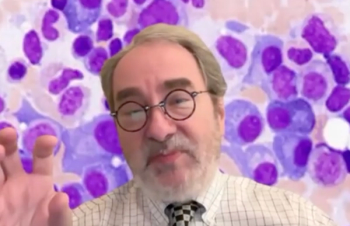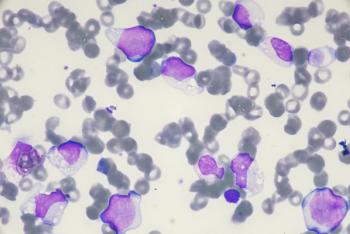
Innovative thinking to control healthcare-associated infections
Decades of research shows that brainstorming doesn’t work when attempting to solve difficult problems. Here's what healthcare leaders should do instead.
On any given day, it’s estimated that
Sadly, despite enormous resources aimed at preventing the problem, HAIs continue to result in infection and even death. Moreover, HAIs cost the U.S. healthcare system an estimated $35 billion annually, making it one of the biggest challenges facing hospital chief executive officers. Clearly, a new way of thinking about HAIs is needed.
Finding new, innovative ways to address a confounding problem like this is difficult, especially if hospitals continue to seek solutions using outdated, “think-outside-the-box” methods like brainstorming. Fifty years of research shows brainstorming doesn’t work. Not only does it actually kill good ideas, but it disproportionately eliminates the very best ones.
Instead, hospitals need to employ more powerful, structured methods of innovating. One proven approach is Systematic Inventive Thinking (SIT). To use SIT, hospitals must retrain the way they look at the problem.
Most people believe innovation begins by establishing a well-defined problem and then thinking of ways to solve it. SIT works in the opposite way. Innovators use SIT to work backwards to take an abstract, hypothetical solution and find a problem that it can solve.
Psychologist Ronald Finke first reported this in 1992 when he recognized there are two directions of thinking: problem-to-solution and solution-to-problem. Finke discovered people are actually better at searching for benefits for given configurations (starting with a solution) than at finding the best configuration for a given benefit (starting with the problem).
To create hypothetical solutions that can lead to problem-solving, SIT follows a set of given patterns. In fact, for thousands of years, innovators have used these five simple patterns in their inventions, usually without even realizing it.
The five patterns are: subtraction, task unification, division, attribute dependency and multiplication. These patterns are embedded into products and services almost like DNA. They regulate thinking and channel the ideation process in a structured way that makes people even more creative.
As an example, consider how to apply the task unification pattern to HAI prevention. Task unification is defined as assigning an additional job to an existing resource. It’s a useful technique to help break the natural tendency toward functional fixedness, a cognitive bias that prevents us from seeing opportunities outside what’s expected.
To use task unification, make a list of components and resources within a hospital. The component list would include things like:
• Board of trustees
• Hospital management team
• Doctors
• Nurses
• Technologists
• Radiology department
• Laboratory
• Rehabilitation
• Pharmacy
• Admissions
• Discharge
• Patient records
• Finance
• Marketing
• HR
• IT
• OR
• Patient rooms
• Nursing stations
Each component or resource should then be given the additional job of how it could break the chain of infection associated with HAIs.
For example, imagine the admissions department has the additional job of eliminating infections through the portal of entry via the patient’s eyes. It sounds crazy at first, but at this stage, the job is to simply ask, what would the benefit be? Could the admissions team identify patients who might be more susceptible to eye infections? Could they administer eye drops at the time of admission to reduce infections? Could they give patients eye protectors or instructions on how to avoid eye infections?
Given the admissions department is the first stop of a hospital visit, this idea might have value.
Creating hypothetical solutions may result in a seemingly ridiculous combination of possibilities. But don’t be dissuaded! SIT is intended to reveal a steady stream of plausible ideas.
Now try using the subtraction pattern. Subtraction is defined as removing an essential component and replacing it with something else.
Like before, make a list of components of some aspect of HAI management, then systematically subtract one at a time to see the possibilities for unique and innovative replacements.
For this exercise, apply subtraction to ICU information monitoring. The components of this activity include:
• Gathering infection data
• Recording data
• Analyzing data
• Reporting data
• Tracking patient locations
• Assessing impact of staff activity on infection outcomes
• Monitoring antibiotic resistance
• Monitoring antibiotic prescribing patterns
Select one of these components randomly from the list and consider the possibilities if that component were removed and replaced with something else. For example, imagine removing monitoring antibiotic prescribing patterns.
It may seem absurd at first. But what if another component of the hospital, such as the pharmacy or finance department, was responsible for this activity? Would that department be able to analyze it from an inventory or cost approach that added value to the overall program? What if drug companies monitored this for their antibiotic products as a value-added service? Would this reveal better practices and uses of their products?
Management and control of HAIs is an intensive, widespread activity for healthcare systems. By narrowing the scope of these activities and applying systematic creativity techniques to each one, hospitals can discover new, never-before-considered ideas to address this pervasive challenge.
Drew Boyd is co-author of "Inside the Box: A Proven System of Creativity for Breakthrough Results" (Simon & Schuster, 2013). He is a 30-year marketing veteran, keynote speaker and professor of innovation, persuasion and social media.
Newsletter
Get the latest industry news, event updates, and more from Managed healthcare Executive.





















































